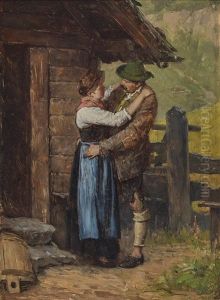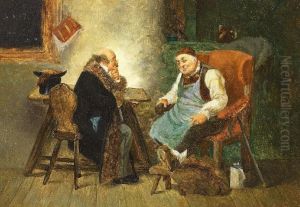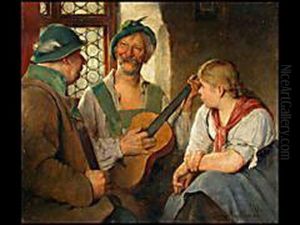Hugo Kaufmann Paintings
Hugo Kaufmann was a German sculptor born on February 16, 1868, in Munich, Germany. He belonged to a generation of artists who contributed significantly to German sculpture at the turn of the 20th century. Although not as widely recognized as some of his contemporaries, Kaufmann's work reflects the artistic transitions of his time, embodying elements of both Realism and Symbolism, and later, touches of the emerging modernist movement. His sculptures often depicted historical figures, allegorical subjects, and themes of national pride, which were popular in Germany during his lifetime.
Kaufmann was educated at the Munich Academy of Fine Arts, where he studied under Syrius Eberle, a noted sculptor of the period. His education and early career were embedded in the rich cultural milieu of Munich, which was a significant center for art and culture in Germany. After completing his studies, Kaufmann embarked on a successful career as a sculptor, receiving commissions for public monuments, busts, and memorials, which were highly regarded for their expressive detail and technical skill.
One of Hugo Kaufmann’s notable works includes a monument dedicated to Prince Regent Luitpold of Bavaria, showcasing his ability to capture both the likeness and the spirit of his subjects. His style evolved over his career, reflecting the changes in artistic trends and the social atmosphere of pre-World War I Germany. Despite the challenges posed by the political and social upheaval of his time, Kaufmann managed to maintain a steady output of work, contributing to his reputation as a dedicated and skilled artist.
Kaufmann's career was cut short by his untimely death in Munich on December 13, 1919, just after the end of World War I. His legacy, however, lives on through his sculptures, which continue to be appreciated for their artistic merit and historical significance. Although not as widely celebrated as some of his peers, Hugo Kaufmann remains an important figure in the study of German sculpture, representing the nuanced transition from the traditional forms of the 19th century to the more experimental approaches that characterized the early 20th century.
















